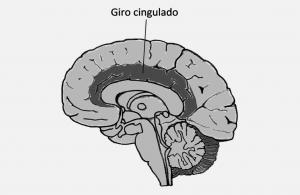How to prevent cognitive decline?
As we already know, an optimal state of physical and mental health acts as a preventive factor against cognitive deterioration experienced with age. When we refer to the type of factors that prevent deterioration, we often refer to a concept called "reserves". But... What do we know about the cognitive reserve and the brain reserve? What is its influence on deterioration?
In the next article we will talk about the types of reserves that our brain has and we will explain its contribution as a preventive factor against deterioration.
The brain reserve and cognitive reserve
The reserve capacity It is one that allows the brain to cope with changes due to normal aging or neuropathological processes, delaying the appearance of clinical symptoms.
According to Arenaza-Urquijo and Bartrés-Faz (2013) there are two interrelated theoretical models for the study of the reserve:
1. Brain reserve model
This type of reservation corresponds to passive model, which refers to the anatomical potential of the brain
: brain size, number of neurons, synaptic density, etc. This type of reserve poses a static and invariable model, since it emphasizes genetic and anatomical factors.2. Cognitive reserve model
It corresponds to active model or functional, referred to the individual ability to use pre-existing or alternative cognitive processes or neural networks (compensatory) to optimally perform a task. Because this reserve can be increased due to the influence of various environmental factors to which we expose ourselves to throughout life (they will be explained later), it could be said that this model, unlike the previous one, responds to a character dynamic.
What is the influence of the reserve against aging?
Now that we know both types of reservation, we will explain its contribution to the aging process, either normal or pathological.
Brain reserve
The brains that have a high degree of said reserve have a higher base substrate, which will allow them a greater resistance to brain damage in the face of pathological phenomena or during aging, therefore both favors a prolongation of the preclinical state in the processes of predementia and dementia (Arenaza-Urquijo and Bartrés-Faz, 2013).
Regarding normative aging, higher reserve estimates will correspond to more structurally preserved brains.
Through neuroimaging techniques such as anatomical magnetic resonance imaging, we can detect brain changes in people with high cognitive reserve who can serve as indicators of a pathological disorder in old age before it has become clinically manifested, such as in Alzheimer's disease.
Cognitive reserve
The cognitive reserve make reference to cognitive processing ability. Such reserve allows the use of neural networks in an effective way trying to reduce the impact of the changes associated with aging and neuropathological processes (Arenaza-Urquijo and Bartrés-Faz, 2013). It could be said that the cognitive reserve enhances interneuronal plasticity and connectivity.
Through various investigations it has been shown that a high cognitive reserve acts as a preventive factor against deterioration and, in the case of dementias, will generally delay the onset of symptoms, and consequently, the diagnosis. However, the underlying pathological progress will be the same regardless of your cognitive reserve, therefore, symptoms will appear when the disease process is more advanced and, consequently, disease progression will be faster once the threshold for clinical and brain involvement has been exceeded.
This is because a brain with high cognitive reserve will present more facility for the use of alternative neural networks when the networks normally used are damaged, however, this compensation will end when the neurodegenerative disease becomes more severe (Pousada and De la Fuente, 2006).
Regarding normative aging, the cognitive reserve means better performance, a more functionally efficient brain, For this reason, it is important to maintain activities that stimulate our cognitive functions throughout the lifetime. In various studies (Arenaza-Urquijo and Bartrés-Faz, 2013), high levels of mental activity have been linked to up to a 50% lower risk of developing dementia.
Therefore it is essential to take into account cognitive training as an intervention to minimize the risk of suffering from cognitive impairment associated with age and / or dementia. Likewise, it has been shown that there are also other types of environmental factors that contribute as a protective factor against cognitive decline, such as factors are: physical and mental health, occupation, hours of sleep, diet, leisure activities and maintaining relationships social.
We can analyze this type of reservation through a functional magnetic resonance (RMf) or by Positron emission tomography (TEP).
Some conclusions
In conclusion, it has been shown that reserve capacity acts as a protective factor against the manifestation of brain changes underlying the aging process or disease, tolerating greater damage to their brains and minimizing, in turn, the impact of the disease on its clinical manifestations.
This fact is of great importance since, although the underlying process is the same, the patient will maintain a quality of life for a longer time. The reserve, therefore, turns out to be one of the numerous factors that demonstrate the reason for interindividual variability as for the symptomatic manifestation before the same cerebral affectation.
Thus, it is interesting to note the need to carry out future research focused on the exhaustive study of specific activities that contribute to increase the cognitive reserve and analyze its consequent interaction with biological factors.
Bibliographic references:
Arenaza-Urquijo, E.M., and Bartrés-Faz, D. (2013). Cognitive reserve. In Redolar-Ripoll, D. (Ed.), Cognitive Neuroscience (1st ed., Pp. 185-200). Madrid: Editorial Médica Panamericana.
Pousada, M., and De la Fuente, J. (2006). Memory and attention. In Villar, F., and Triadó, C., Old age psychology (1st ed., Pp. 114-140). Madrid: Alianza Editorial, S.A.


